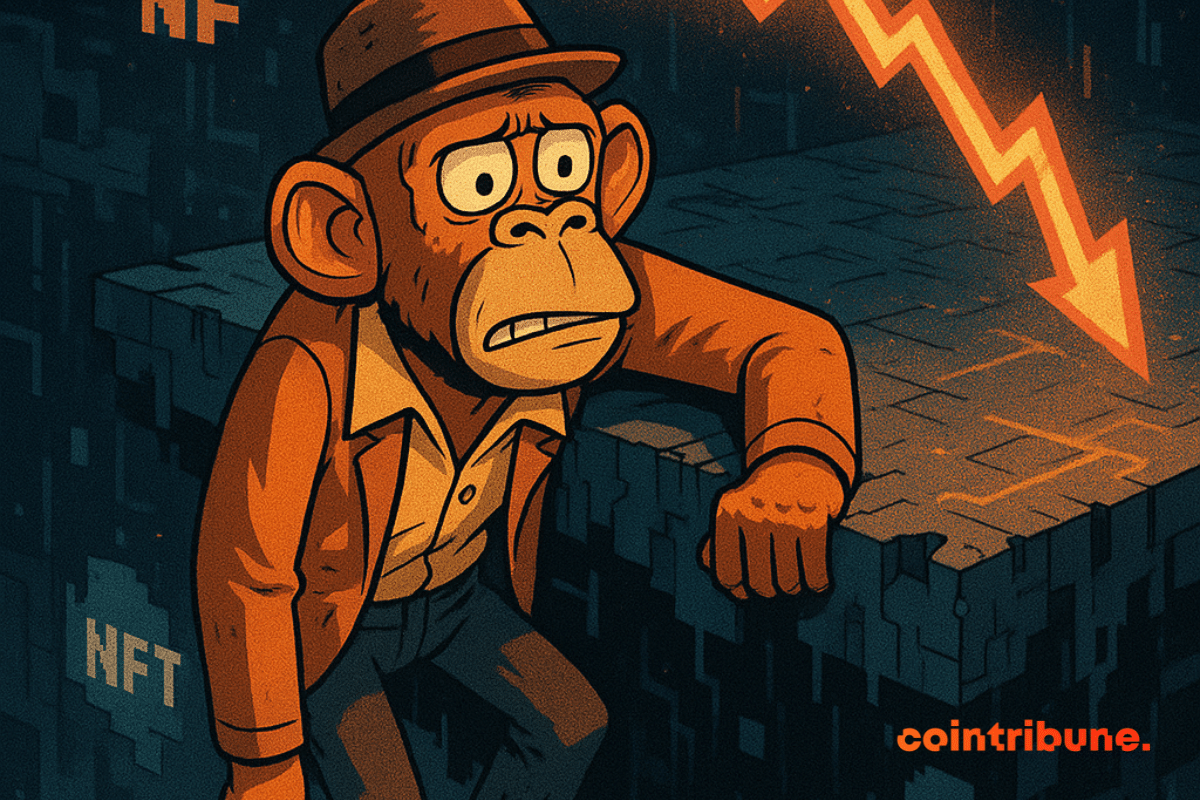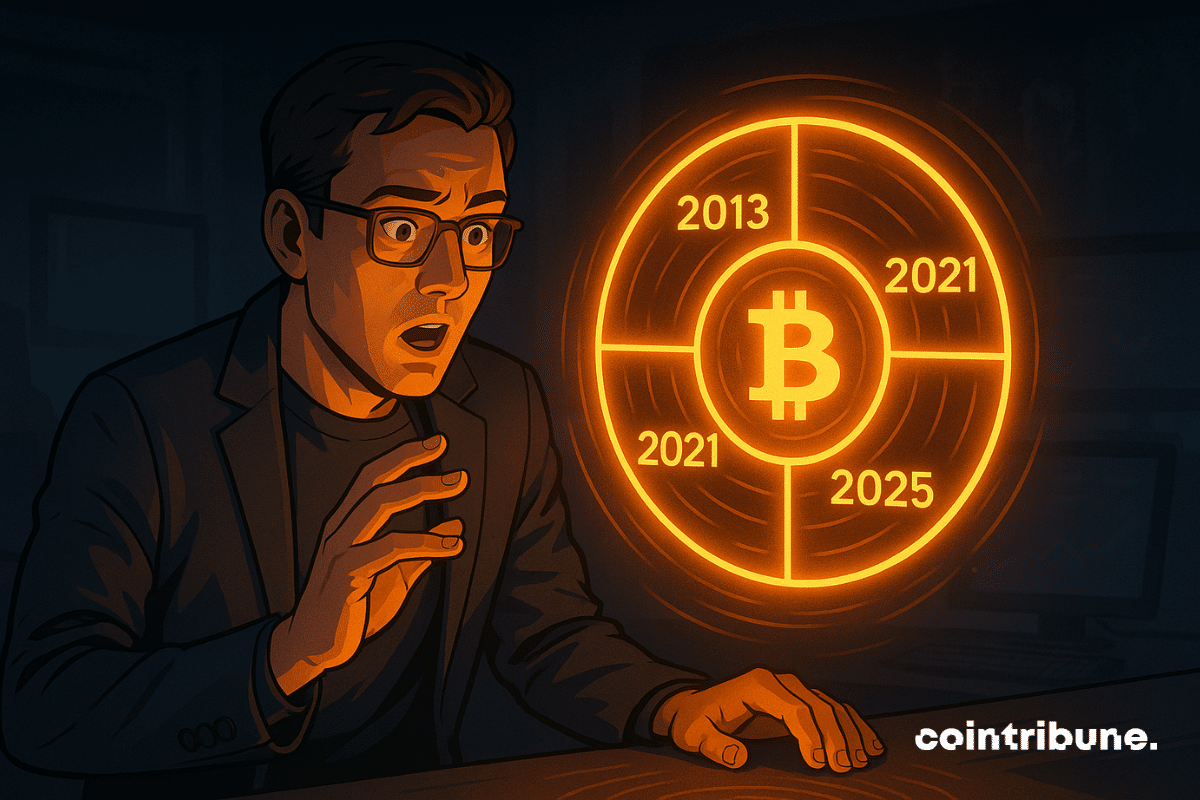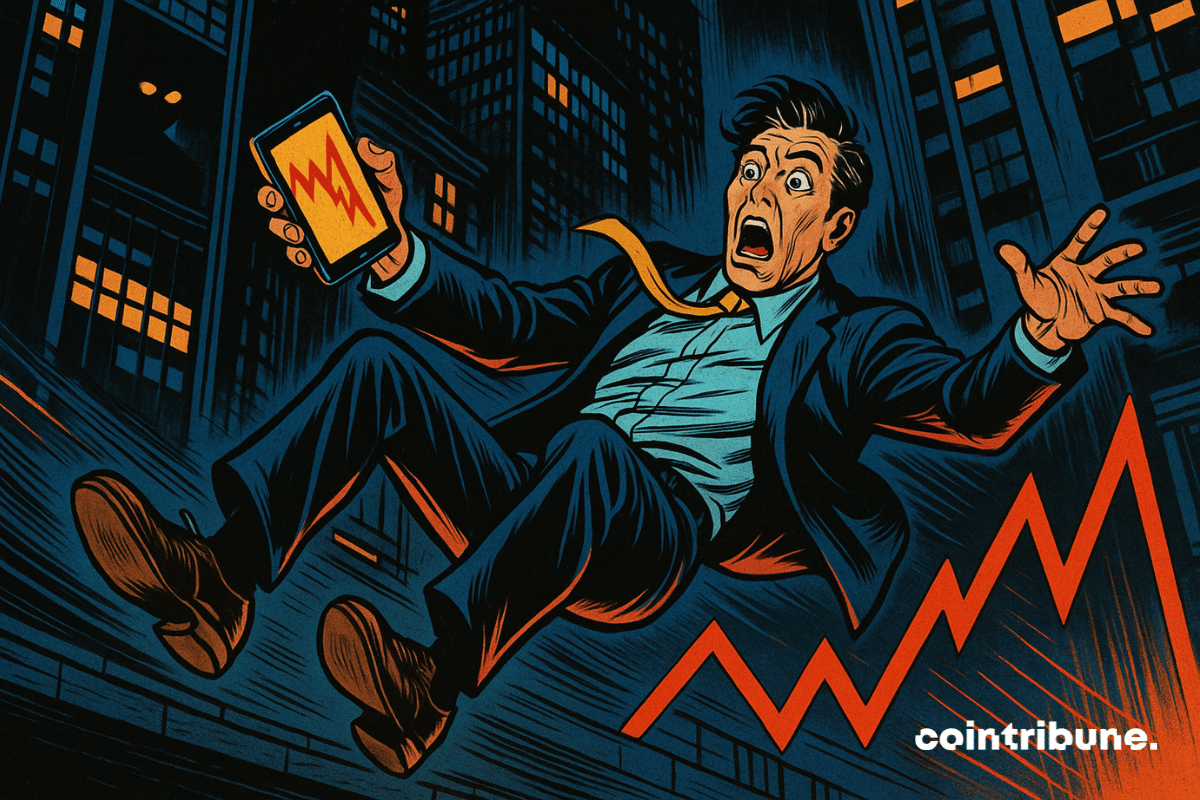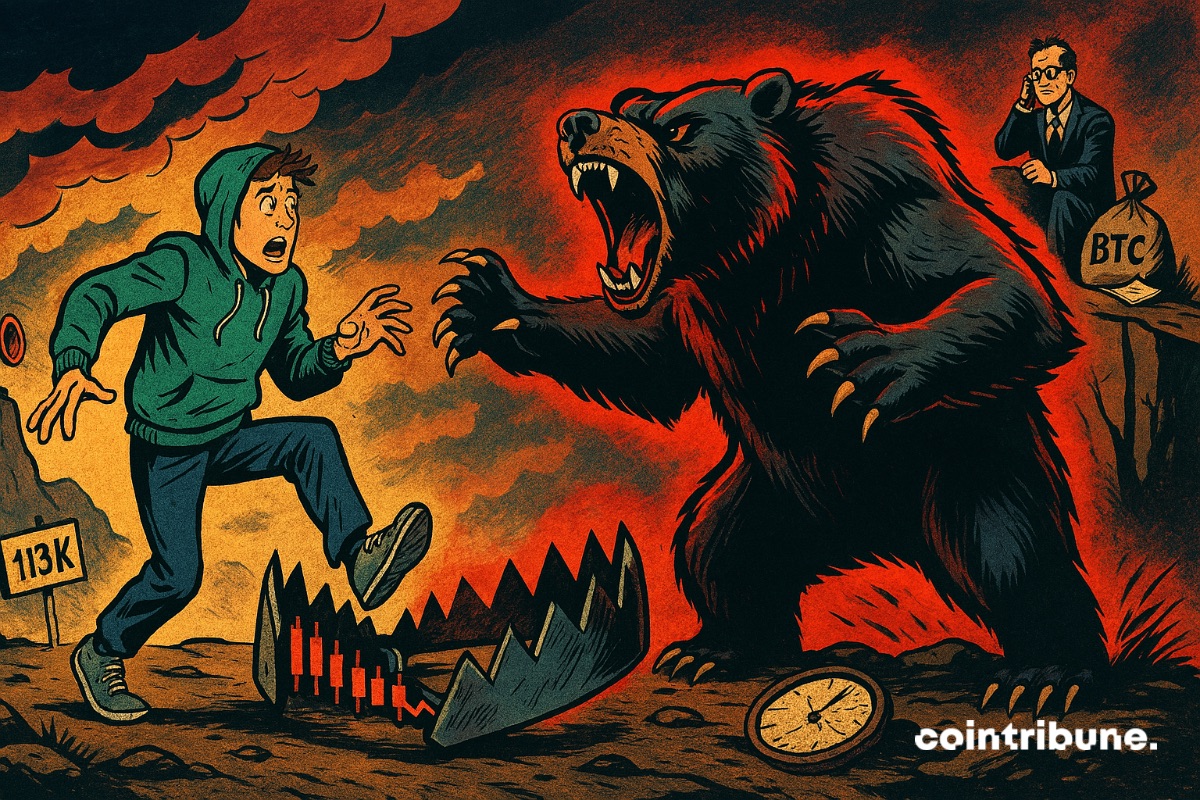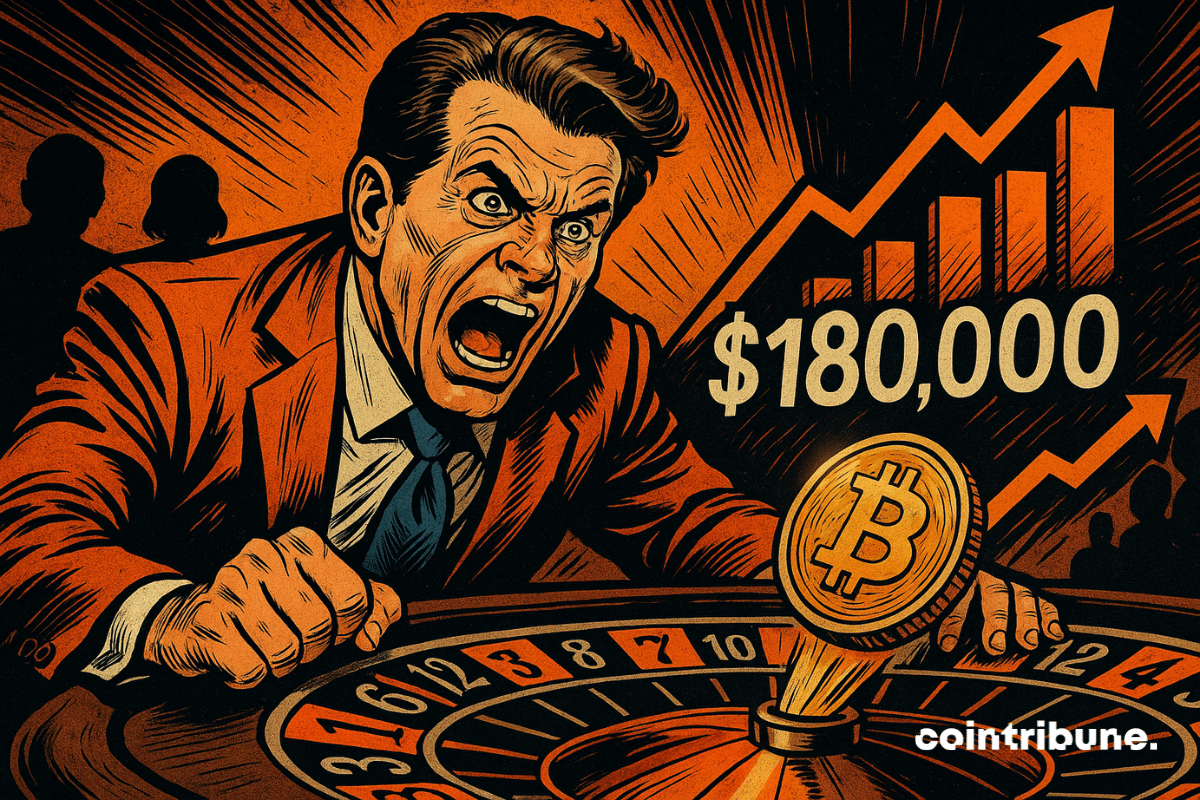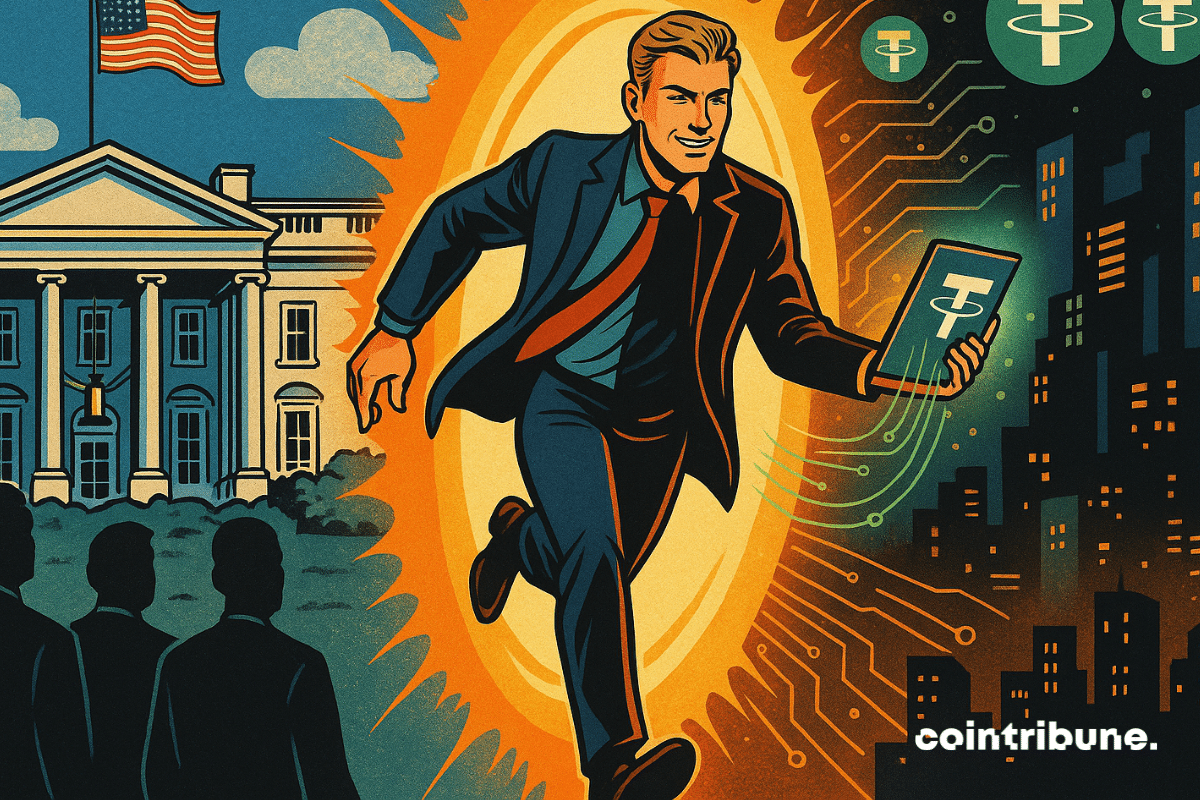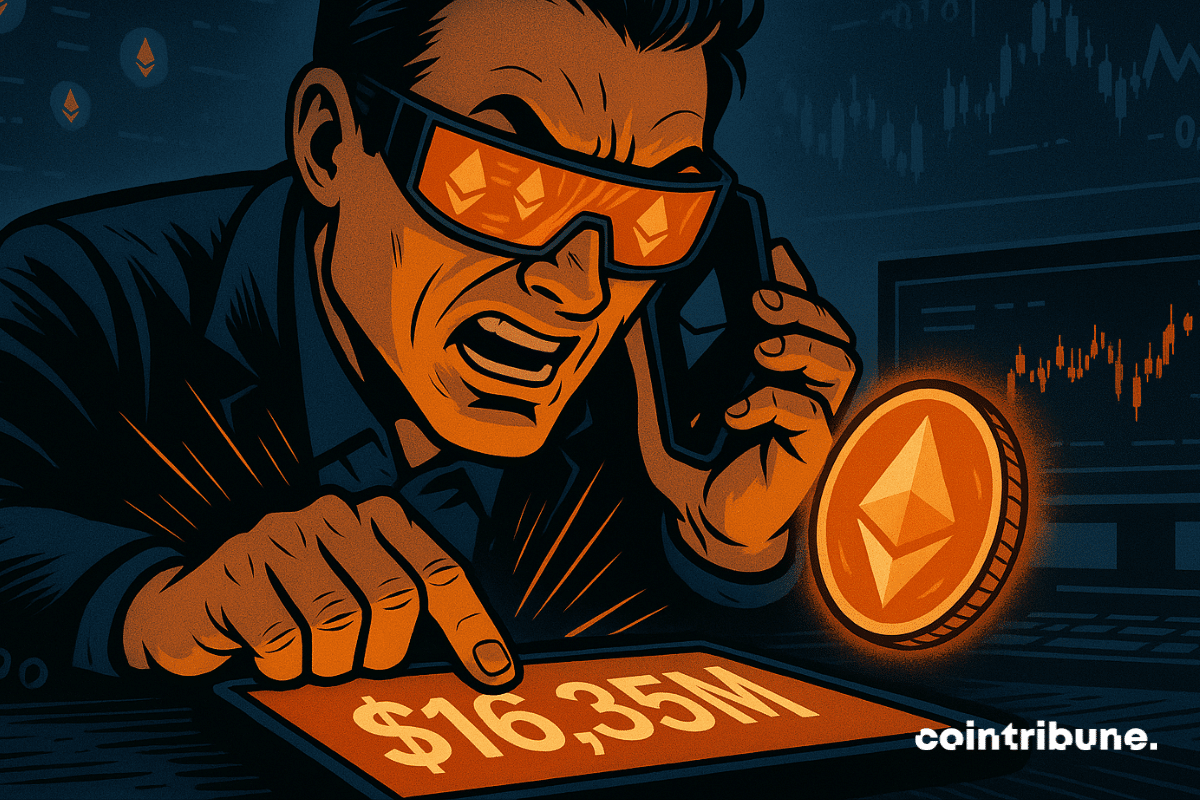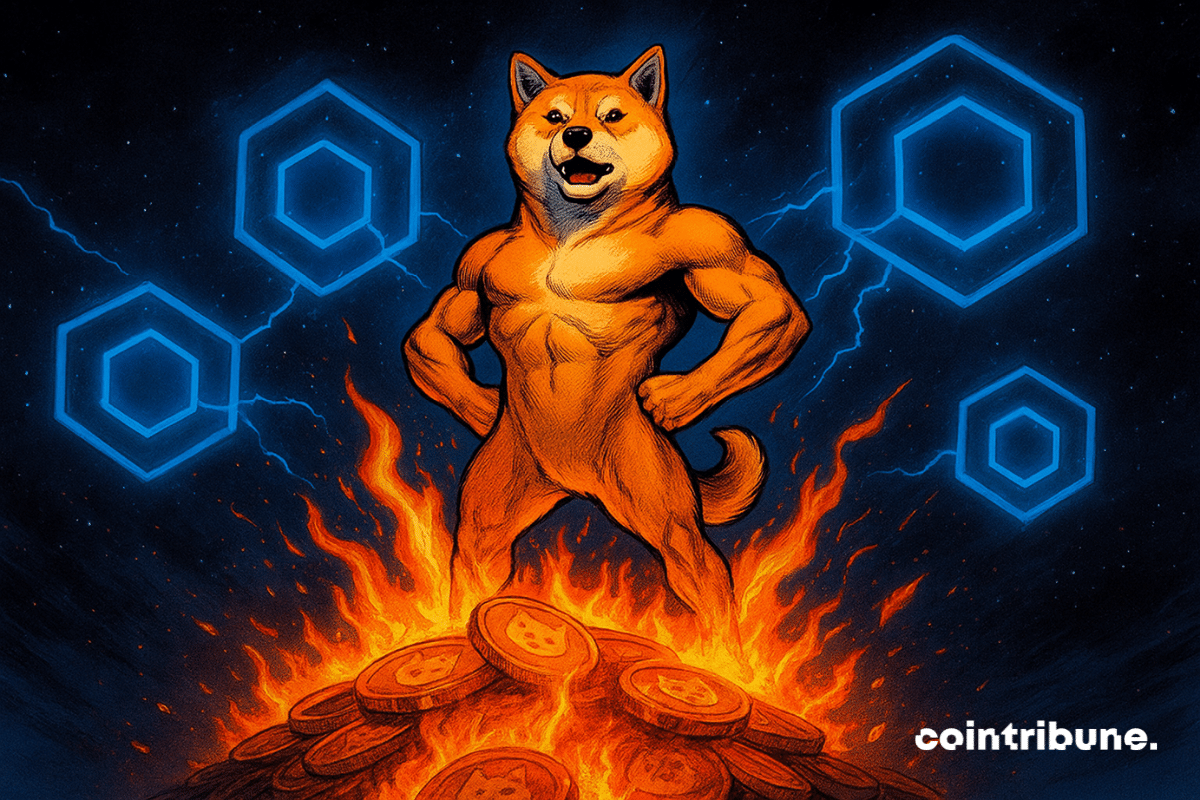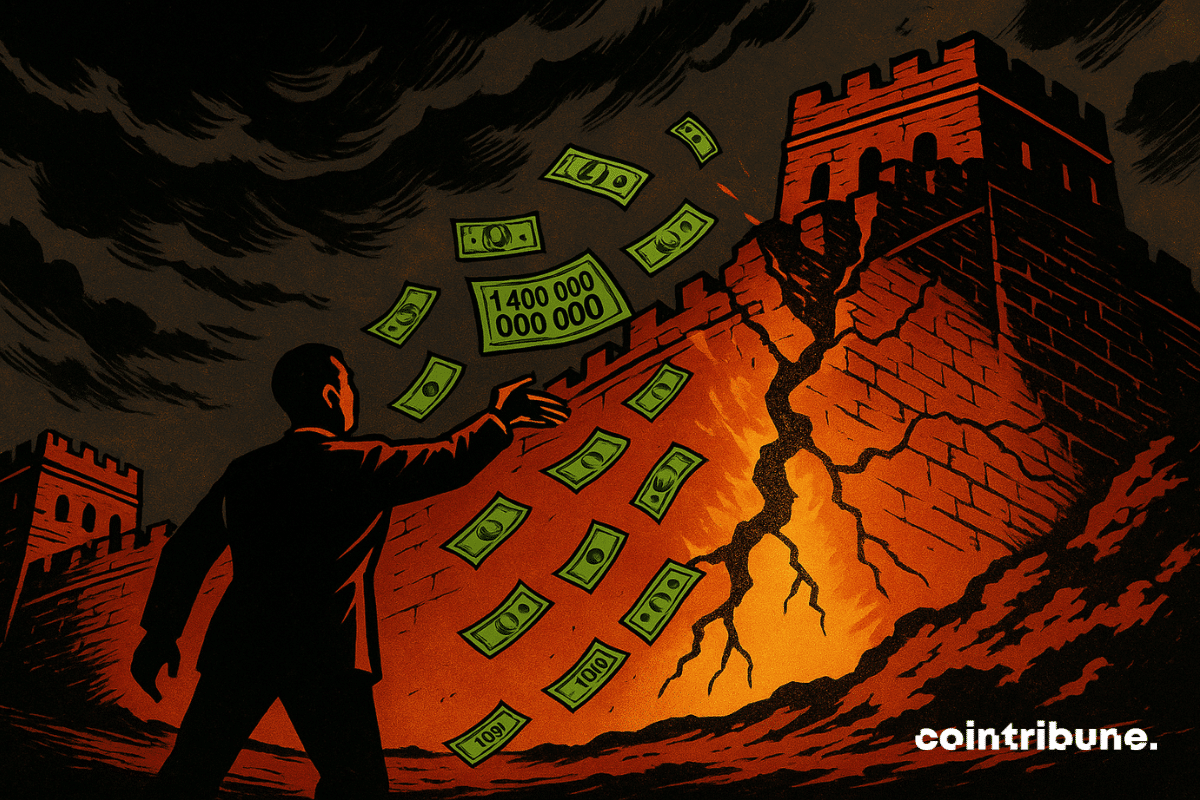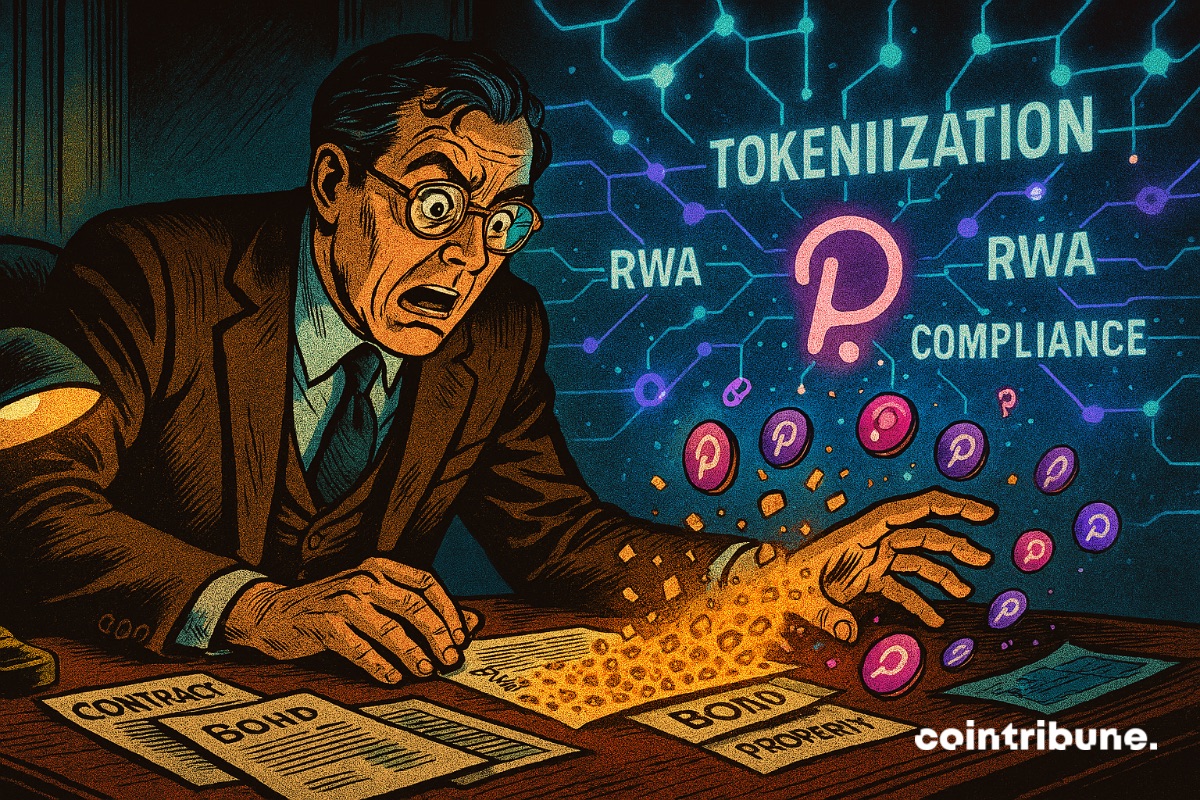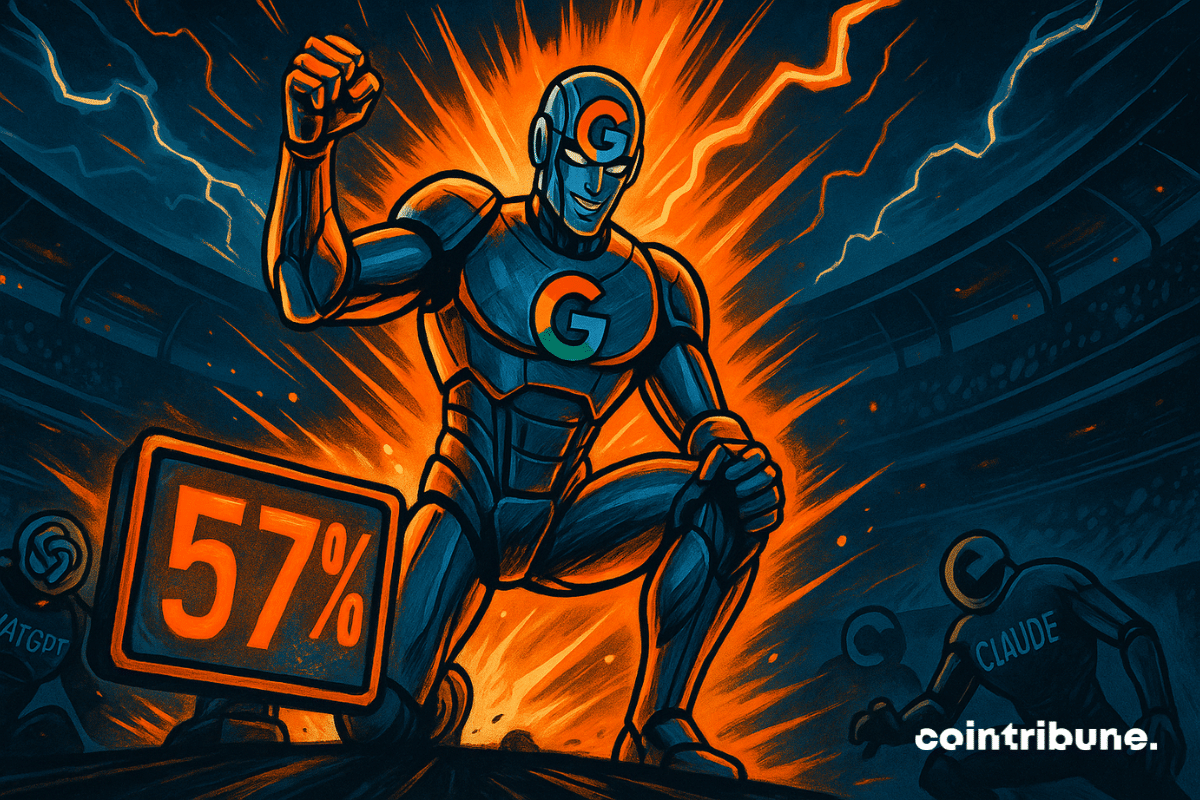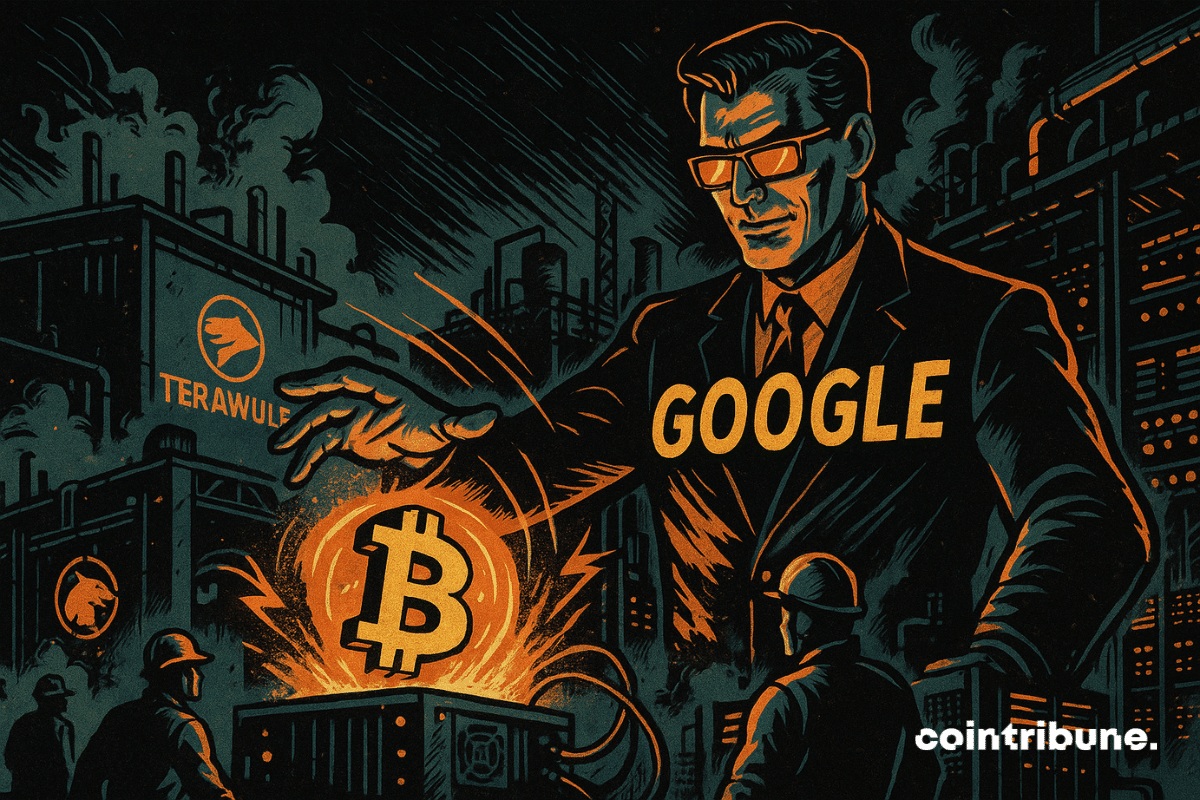Despite the drop in their popularity, NFTs still show 3.62 billion dollars in sales in 2025. Since 2017, they have accumulated 71.55 billion, with the majority on Ethereum. After the 2021-2022 boom followed by the 2023 slowdown, the market has stabilized. Less speculative, NFTs are now anchored in more concrete digital uses.
Getting informed
A group of crypto companies, financial institutions, and regulatory authorities has launched the Beacon Network. This network allows the rapid detection and freezing of stolen funds on the blockchain, bringing together players like Coinbase, Binance, Kraken, PayPal, and Ripple, alongside security researchers and law enforcement.
Despite predictions announcing the death of Bitcoin's traditional four-year cycle, Glassnode's analysis reveals troubling signals. The recent price movement echoes historical patterns, suggesting that the famous cycle could still dictate market pace. But this time, the stakes are different.
Elon Musk, a leading figure in tech and accustomed to strategic breakups, shook the American political scene by suggesting the creation of his own movement, the "America Party." The announcement, spectacular, promised a redefinition of the electoral game. But to everyone's surprise, the project is now suspended.
Bitcoin wavers approaching Jackson Hole. On Wednesday, August 21, the asset dropped sharply, reaching a 17-day low. This sudden decline rekindles suspicions of manipulation, as some analysts point to strange liquidity movements in order books, evoking the shadow of whales. Others urge caution, recalling that the nervousness could also come from macroeconomic uncertainty, as the highly anticipated speech by Jerome Powell, Fed chairman, looms on the horizon.
Bitcoin plunges to 113,000 dollars, triggering panic among retail investors. Technical analysis, institutional strategy, and potential bearish trap: discover why this correction could hide an unexpected buying opportunity for the most strategic.
Crypto ETFs are going through their strongest turbulence zone in weeks. In a single session, nearly one billion dollars were withdrawn from funds backed by bitcoin and Ether, in a fragile market context. This wave of withdrawals, which coincides with a sharp drop in prices, reveals a reversal in investor sentiment. As the two flagship assets falter, institutional investor confidence also seems to be retreating.
After a difficult month marked by a drop in revenue and the breakthrough of LetsBonk, Pump.fun regains its leadership. The memecoin platform recaptured 73% market share, generating 13.48 million in one week, a record performance. This rebound is part of the broader recovery of the crypto sector, driven by renewed interest in memecoins.
When Scaramucci says 180,000, it’s not his salary, but his Bitcoin prophecy. Between ETFs, whales and stablecoins, the small crypto world is heading towards peaks... or traps?
The horrific universe of H.P. Lovecraft makes its way into the Web3 collectible card game ecosystem with "Call of Myth", the ambitious project from Kadath Studio. This competitive PvP CCG promises to revolutionize the genre through innovative mechanics, a fair economy, and full immersion in Lovecraftian cosmic horror.
The strategic partnership between Kadath Studio's Call of Myth and Immutable goes far beyond a simple technical agreement. This alliance symbolizes the evolution of Web3 gaming towards maturity, combining gameplay innovation with a blockchain infrastructure optimized for mainstream adoption. This collaboration could set a new standard for the industry by demonstrating how to overcome traditional decentralized gaming obstacles.
MetaMask, the wallet developed by Consensys and used by more than 100 million users worldwide, has just natively integrated the Tron blockchain. This long-awaited development confirms the crypto giant's expansion strategy beyond Ethereum. It follows the recent additions of Sei and Solana.
Bo Hines, former White House Crypto Council director, joins Tether to lead U.S. digital asset strategy and drive stablecoin expansion.
Ethereum dips to just above $4,100, but major traders are making big leveraged bets, signaling confidence in a rebound.
Shiba Inu (SHIB) has made a significant move of collaborating with Chainlink (LINK) to develop its ecosystem. With this shift, the meme-turned-utility coin is retwisting its burn policy, ushering in a new mechanism to link all cross-chain transactions back to Ethereum. This approach ensures SHIB continues to honor its roots while branching into new territory.
The Frontier stablecoin has been deployed on seven blockchains via LayerZero technology. Supported by the State of Wyoming, it aims to use the income from its reserves for education, with possible redistribution to holders in the future.
Faced with a wave of critical maturities on $4,000 billion of debt, Beijing launched an unprecedented monetary response. In August, the People's Bank of China injected $1,400 billion to avoid the suffocation of its bond market. More than an emergency measure, this intervention marks a strategic turning point in managing Chinese financial flows. In a context of global tensions, this technical gesture speaks volumes about Beijing's determination to maintain control over its economic cycle.
Bitcoin dropped by 7% in a few days, just after reaching an all-time high above $124,000. Simple pause or the start of a reversal? While the market questions the strength of the bullish cycle, some on-chain indicators send a completely different signal. Behind the volatility, some well-known indicators among seasoned investors outline a possible bottom, often a precursor to a rebound.
Polkadot Capital Group revolutionizes finance by connecting Wall Street to Web3 through asset tokenization. Discover how this blockchain initiative could transform institutional markets and propel DOT into a new era of adoption and performance.
Bitcoin (BTC) is once again at a crucial crossroads after dropping below the $120,000 price mark, intensified by strong capital exits. For now, the OG crypto is hovering within the $120K rejection point and other key support regions. With the market currently consolidating, market participants are observing these levels as BTC appears to lose steam following multiple rejections at cycle highs.
What if Ethereum was quietly preparing a world where AIs talk among themselves without us? With ERC-8004, the blockchain already dreams of a permissionless Web3... no gatekeepers either.
The Web3 esport industry is about to experience a historic event with the launch of the Call of Myth tournament, endowed with an exceptional prize pool of one million dollars. Scheduled for September 25, 2025, this tournament sets a new standard in the blockchain gaming ecosystem by offering 100% free entry and qualification based exclusively on player merit.
Crypto ETFs blocked, Trump put on hold, and the SEC playing for time: behind regulatory delays, a strange political ballet resembling regulatory poker.
A solo Bitcoin mining success earned an independent miner $365,000 from block number 910,440.
Prediction markets are shaping a new landscape for artificial intelligence. While ChatGPT seemed unshakable, Kalshi data reveals a surprising upheaval: 57% of bettors now wager on Gemini to become the best text-based AI model by the end of 2025.
The US Department of the Treasury opens a public comment period until October 17, 2025, to assess cutting-edge technologies in the fight against money laundering and sanctions evasion. This approach is directly part of the implementation of the Genius Act, the historic legislation signed by Donald Trump that revolutionizes the regulation of stablecoins. But which technologies are US authorities really scrutinizing?
Qubic shifts attention to Dogecoin after gaining control of Monero’s mining, clarifying the move is about mining, not attack.
American Senator Cynthia Lummis officially introduced the 21st Century Mortgage Act, a groundbreaking legislation that would require government-sponsored enterprises to consider digital assets when assessing eligibility for single-family mortgage loans.
Google took a 14% stake in the bitcoin mining company, TeraWulf. This operation follows an increase in its financial commitment in a colocation agreement with Fluidstack. Thanks to this move, the tech giant becomes the main shareholder of TeraWulf and thus strengthens the credibility of its model between crypto and high-performance hosting.
The NFT sector lost more than $1.2 billion in market value within a week as Ether prices cooled. According to NFT Price Floor, the market capitalization of NFT collections fell 12%, dropping from $9.3 billion to $8.1 billion. The correction followed Ether’s decline of nearly 9% after recently reaching a high of about $4,700.
